Crazy for Colorful Cones: 5 Container Plantings Beyond the Bowl
http://decor-ideas.org 08/23/2013 17:40 Decor Ideas
Hanging baskets have been a feature of British gardens for generations. Usually planted with an array of summer-flowering annuals and half-hardy perennials, they put that extra something into even a small garden.
Traditional hanging baskets were bowl shaped, but we now find them in a variety shapes and materials, woven from such obscure materials as banana leaf, black sea grass and water hyacinth.
Of all the new shapes, I prefer the deep cone. It holds a larger amount of growing medium than the standard bowl, allowing for better root growth and moisture retention, while also being more satisfying to the eye.
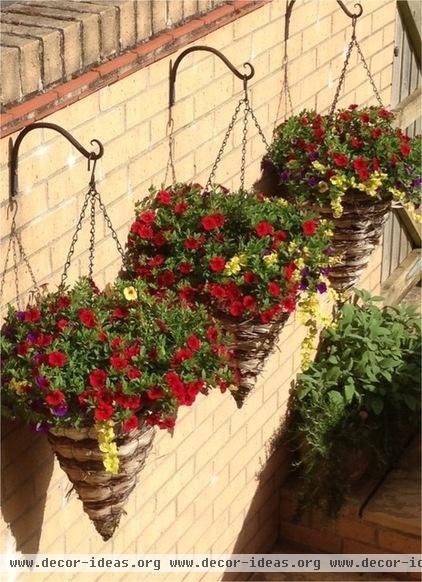
I'm lucky to have a high, south-facing wall in my garden that is perfectly suited for hanging baskets. Here I have installed a row of three simple arched brackets to hold identical planted cones.
Over the past eight years, I have tried various plantings, both summer and winter, some more successful than others but always dependent on the vagaries of the British weather. From my traditional planting to this year's simple primary color scheme, there may be something to inspire you to plant your own cones.
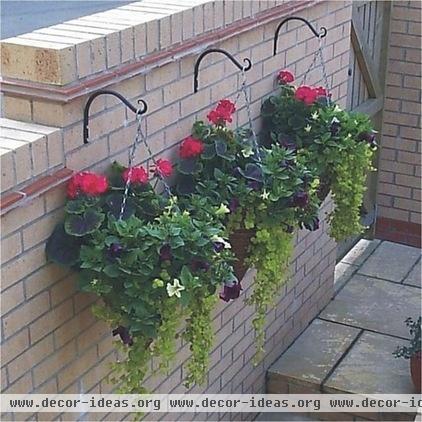
1. Traditional summer planting. The British summer hanging basket traditionally has been planted with a mixture of half-hardy plants — plants that are generally perennials and need frost protection in most parts of Britain — that have been selected from borders and containers.
My take on this traditional style included one of the Victorian gardener's favorite plants, the Zonal geranium (Pelargonium x hortorum). These are bushy perennial plants, with zones of maroon or bronzy green on their leaves, and large flowers held on strong stems above the foliage. Favorite colors include red, as I used, plus white, pink salmon, magenta and orange.
Filling the center of the basket, I added a mixture of deep purple and white petunias — perfect in warm, dry summers but a disaster in a typical damp season. To contrast the purple flowers and deep green foliage, golden creeping Jenny (Lysimachia nummularia 'Aurea') finished off the planting.
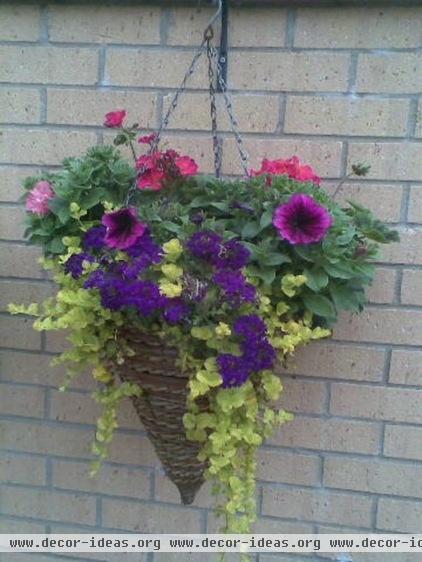
Though it was successful, I really felt that more color was needed to bring the traditional style-planting to life. The solution included the electric purple-blue of a trailing verbena (Verbena 'Lanai Blue Denim') that wound through the rest of the planting and contrasted brilliantly against the creeping Jenny. Trailing verbena is perfect for planting in a mixed basket, as it's a strong grower and tends not to be dominated by other plants, such as the petunias here.
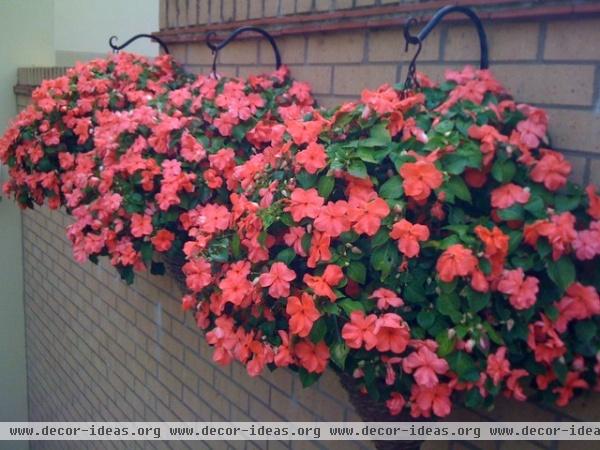
2. A Busy Lizzie finale. I love the repetitive planting of three identical cones. The almost-rampant growth of these peach-colored Busy Lizzies (Impatiens walleriana) created living ice cream cones, and they need almost no maintenance other than watering and feeding.
I grew these only one year, as 2010 plantings of Busy Lizzie succumbed to a new strain of downy mildew, causing them to wither and die. It became so bad that gardeners were advised not to plant them, and today it is difficult to find them for sale in British nurseries and garden centers.
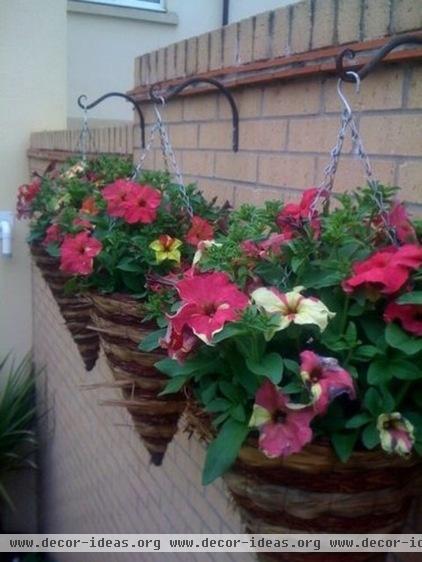
3. Petunias for sunny summers. I first saw this variety of petunia at a nurseryman's trade show, where I was lucky to be able to view plant introductions ahead of the general public. I love my cones of Petunia 'Sophistica Lime Bicolour' — they have perhaps the most incredible color combination you can get in petunias.
I found them easy to grow from seed, though they can easily be bought as plant plugs or starter plants, and mine soon grew to carry their stunning blooms of pale lime green splashed with cerise pink.
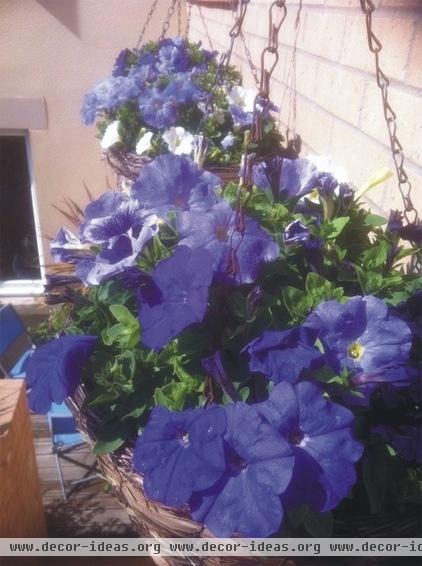
Another easy-to-grow petunia I've filled my cones with is Petunia 'Surfinia'. Its blooms are more weather resistant and unbeatable for flower power.
Here I used Petunia 'Surfinia Sky Blue', which quickly filled my cones and by the end of summer trailed down the wall, covering it in violet-purple flowers that faded to a lavender-blue. Surfinias cannot be grown from seed and have to be bought as plants.
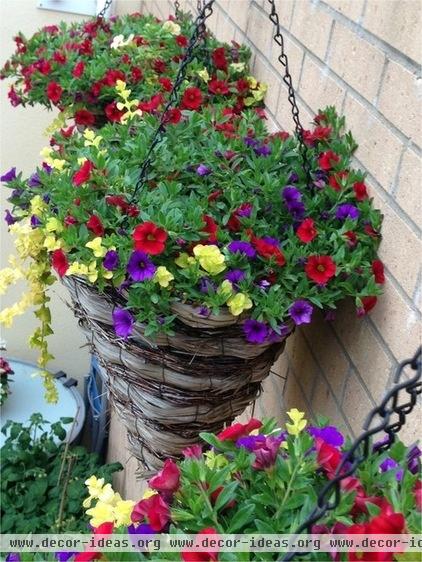
4. A confetti of colors. Formerly known as 'Million Bells', Calibrachoa has been hailed as the perfect replacement for petunias in baskets and containers, as it will put up with rainy days without its blooms being adversely affected.
This is the first year I've grown it, and it has loved our summer mixture of wet days and, unusual for Britain, high temperatures. I put only one plant into each cone, and they soon filled the baskets with a wonderful mixture of primary-color petunia-like blooms.
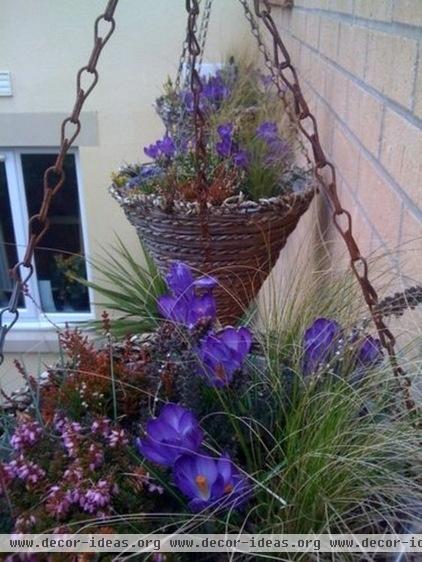
5. Easy winter color. Winter cones can be trickier in the damp southwest of Britain. In the past I've tried pansies and violas with mixed success and also the semi-hardy Miracle cyclamen, but all can struggle with the continual damp and the colder winters we've had in recent years.
One trick I have learned is to use the same moisture-retention granules that you mix into the compost of summer baskets, the benefit being that the granules take up excess moisture when the compost is wet and help prevent waterlogging.
My planting solution here has been using a mixture of a winter-flowering heather, Erica carnea, and small grasses (here I used Stipa tenuissima), all underplanted with purple crocus. It gave color through the winter with the flowers and foliage of the heather, an extra boost of color when the crocus flowered and the benefit of movement with the grasses swaying in the seasonal winds.
Grasses such as Stipa tenuissima can be very easy to grow from seed. Sown in the spring, they make supersmall plants for using in winter baskets and containers, and the following year they are perfect for planting in borders. Be sure to check if the grass you're considering is invasive before transplanting it into your garden.
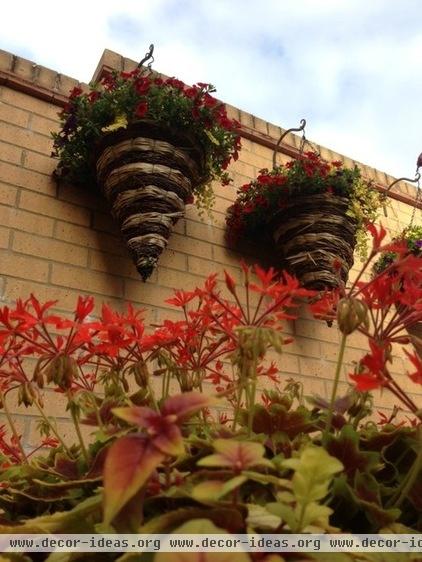
In a smaller garden it is important to keep cohesion in the design. Sometimes I like my cones to become a dominant feature — strong in color and form, they can almost become living artwork.
This year, though, I planted containers below my cones to coordinate with the colors of the Calibrachoa in the cones. The planting consists of yellow- and gold-foliaged geraniums and trailing fuchsias with warm orange-red flowers. Trailing beneath is golden Creeping Jenny to mirror those trailing from the cones above.
More: Get the Hang of Hanging Flower Baskets
Related Articles Recommended












